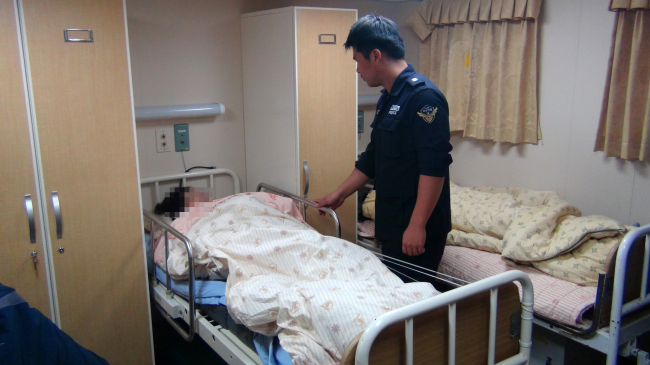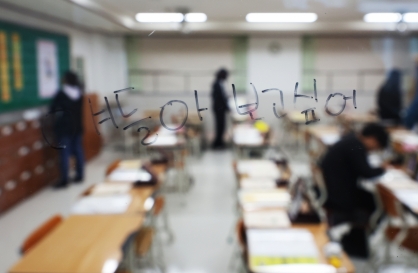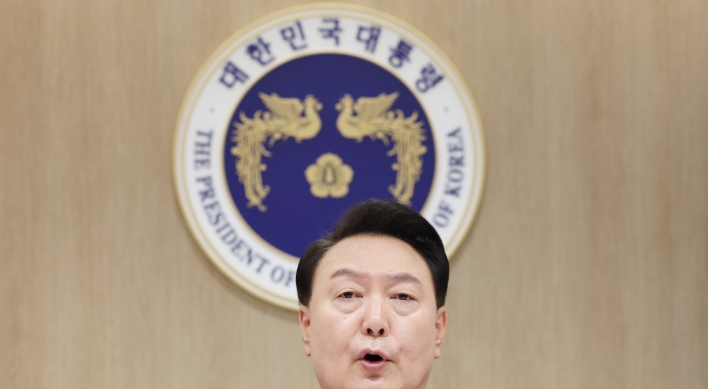Health expenditures of South Korean households increased significantly by 41.3 percent from 2008-2013, especially hurting low-income families here, a study showed Thursday.
The study, by Lee Tae-jin from Seoul National University, researched government data on medical expenditures of local households, including costs for hospital care, outpatient care and medical goods.
The study found that health expenditures kept increasing throughout the period, from an average annual cost of 1.05 million won ($915) in 2008 to 1.48 million won in 2013.
The study, by Lee Tae-jin from Seoul National University, researched government data on medical expenditures of local households, including costs for hospital care, outpatient care and medical goods.
The study found that health expenditures kept increasing throughout the period, from an average annual cost of 1.05 million won ($915) in 2008 to 1.48 million won in 2013.

Such medical costs accounted for 6.2 percent of annual household income in 2008, and 7.5 percent in 2012.
Lee’s study found that the nation’s low-income earners spend more on health care than those with a high income. Those who belonged to the poorest 20 percent spent 1.86 million won for health care in 2012, while those belonged to the wealthiest 20 percent spent 1.28 million won.
Medical expenditures accounted for 15.6 percent of the annual income of those who belonged to the poorest 20 percent, while it made up only 4.2 percent for those who belonged to the wealthiest 20 percent.
In some severe cases, health care cost accounted for up to 80 percent of a low-income household’s annual income, especially among families whose member suffers from cancer or heart disease.
Meanwhile, the proportion of Korean households who spend more than 10 percent of their annual income on health care has been steadily rising, from 13.4 percent in 2008 to 14.6 percent in 2012.
Throughout the five years, 29.7 percent of all Korean households spent more than 10 percent of their income on health care at least once.
As some 6.8 million Korean baby boomers (those born 1955 to 1963) are entering their 60s this year, the government predicts that medical costs for the elderly will continue to rise as the boomers’ population grows older, thereby doubling the current elderly demographic to more than 7.2 million.
Last year, about one-third of total medical costs -- 19.4 trillion won -- was spent to treat the elderly, who already account for 11.9 percent of the total Korean population. The cost increased by 10.4 percent from the year before, mostly due to the increased number of those aged 75 or older who sought medical help for dementia and cerebrovascular diseases, according to government statistics.
“Those with chronic conditions and low income are the most vulnerable to limited health care access,” Lee said.
According to another study by Yonsei University published last year, Korea’s public expenditure rate for health care steadily dropped from 2009 to 2011, from 56.7 percent to 55.3 percent. The study also pointed out that although almost 97 percent of the Korean population is covered by the National Health Insurance, medical expenditures accounted for 35.2 percent of all household income here in 2011, which was much higher than the OECD average of 19.6 percent in the same year.
“High medical expenditure results in not only reduced ability to pay for basic needs, such as food, but also limits a child’s access to education,” the report said.
“Furthermore, many households fall into poverty owing to the high medical costs. In a polarizing social structure, the loss of one’s health signifies much more than a simple temporal loss to those whose labor power relies heavily on good health. Illness represents loss of working ability and, at least in a capitalist society, can mean job loss and lead directly to social poverty.”
By Claire Lee (dyc@heraldcorp.com)


















